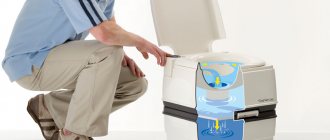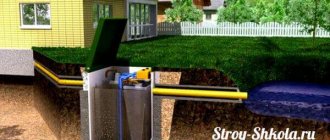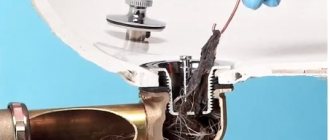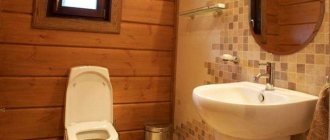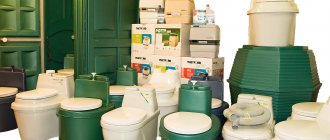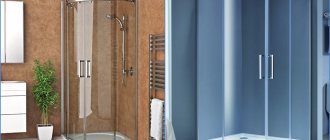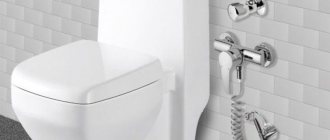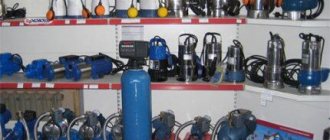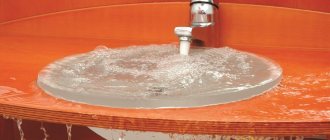Updated: 02/19/2021 18:37:09
Expert: Andrey Nikolaevich Kuznetsov
*Review of the best according to the editors of expertology.ru. About the selection criteria. This material is subjective in nature, does not constitute advertising and does not serve as a purchase guide. Before purchasing, consultation with a specialist is required.
When organizing water supply, heating and sewage disposal systems, surface pumps are used. Unlike submersible models, external devices are easy to install and operate, and they have a wider scope of application. The Russian market offers a wide range of surface pumps. Before choosing the most effective model, you need to study the recommendations of our experts. The review was compiled based on an analysis of technical characteristics on the resource https://rankquality.com/water-pump/.
Rating of the TOP 15 best surface pumps of 2020-2021
| Place | Name | Price |
| TOP 3 best surface pumps by price, quality and reliability for 2021 | ||
| 1 | Grundfos UPS 25-40 180 (45 W) | Find out the price |
| 2 | Metabo P 2000 G (450 W) | Find out the price |
| 3 | Wilo PB-088EA (140 W) | Find out the price |
| TOP 3 best surface circulation pumps | ||
| 1 | Grundfos UPS 25-60 180 230V (60 W) | Find out the price |
| 2 | Wilo Star-RS 25/6-180 (84 W) | Find out the price |
| 3 | Grundfos UPS 32-60 180 (60 W) | Find out the price |
| TOP 3 best surface pumping stations | ||
| 1 | Denzel PS800X (800 W) | Find out the price |
| 2 | Grundfos JP 4-47 PT-H (850 W) | Find out the price |
| 3 | DAB E.sybox Mini 3 (800 W) | Find out the price |
| TOP 3 best surface sewer pumps | ||
| 1 | SFA SANISWIFT (400 W) | Find out the price |
| 2 | SFA SANIDOUCHE (250 W) | Find out the price |
| 3 | SFA SANIBOX (470 W) | Find out the price |
| TOP 3 best inexpensive surface pumps | ||
| 1 | Denzel GP1000Х (1000 W) | Find out the price |
| 2 | ZUBR NS-T3-800 (800 W) | Find out the price |
| 3 | UNIPUMP JET 100 L (750 W) | Find out the price |
Internal or external
Surface devices are designed for wells and shallow wells. The distance to the water surface should not be more than 8-9 m. For wells with greater depth, submersible pumps are installed, which is why they are also called deep pumps.
Surface devices are placed outside the well. This makes them easy and convenient to maintain. They are often installed together with a storage tank to stabilize the pressure in the system. But because the surface pump operates outside the well, it makes a lot of noise and also takes up space. As a result, it is necessary to arrange an area for it and build a building to absorb sounds. Since the pump is out of the water, its motor is not cooled by it.
Layout of internal and external pump for a well
Submersible devices are divided into several types:
- vortex;
- screw;
- vibration;
- centrifugal.
Vortex pumps have one impeller. It draws water into the inner part and pushes it out into the outer part, due to which a vortex appears. As water passes through the wheel, its speed and pressure increase. The design of these pumps is simple, so they have a low price. But because of this, they have low efficiency and are unable to work with liquids that contain sand or other similar impurities, as this leads to rapid wear of the device.
Vortex pumps are recommended for use in wells with low flow rates or when a small water supply is required.
Vortex pump device
The main working element of a screw device is the screw (auger). Water, getting inside the pump, is gradually pumped by the auger, eventually pressure appears and the liquid is forced out. Just like the vortex device, the screw device has a simple design and low price. Recommended for use in wells with low flow rates. But compared to a vortex pump, a screw pump is more resistant to impurities in water.
Screw pump design diagram
How to choose a surface pump?
When choosing a surface pump, pay attention not only to the cost of the device, but also to its technical characteristics:
- Productivity . This criterion depends on the purposes for which the pump will be used. For example, for irrigation, a device with a capacity of 1 cubic meter per hour is sufficient, and for organizing water supply at home - up to 3 cubic meters.
- Napor . This is the second most important criterion. It reflects the distance from the point of water intake to the tap. For example, for a well up to 9 meters deep a surface pump will be sufficient, but for deeper wells a centrifugal model with an ejector will be needed.
- Power . It determines not only the amount of energy consumed, but the speed at which the device will pump water.
The brand of the surface pump is also very important . It is better to give preference to devices from trusted manufacturers.
They make truly high-quality equipment and do not skimp on materials.
Important parameters
When choosing a pump to service an underground well, you should first of all focus on the depth from which the liquid must be pumped out. To determine this parameter, you need to lower a dry rope with a weight at the end into a pre-drilled well, with the help of which you can find out at what depth the water is located in the underground source.
Selection of a pump begins with determining the depth of the well and the distance of water pressure supply
Having determined the depth of the water, you can begin to select pumping equipment that should ensure its rise to the surface and further transportation through the pipeline system. The maximum depth from which a surface pump of a certain model is capable of lifting water is indicated in the technical data sheet for such a device. It is better to select a surface pump model for a well with some reserve in terms of the created pressure of the pumped liquid medium. This approach to the selection of pumping equipment will ensure its operation without overloads, which may periodically occur during the operation of such devices.
If we talk about the most important parameters that people usually pay attention to when choosing surface pumps for a well, these include:
- the maximum height to which the pump can lift water (this indicator characterizes such a parameter as the created pressure, measured in meters of water column);
- the distance over which it is necessary to transport water through the pipeline served by the pump;
- the volume of water that the pump must pump per unit of time (this indicator is characterized by such a parameter as productivity, usually measured in liters per minute or per hour).
For a complete water supply to a family of 3–4 people, you need a pump with a capacity of 3–5 m3/hour, but if you plan to use the pump periodically, then 1–2 m3/hour is enough
In order to make it clear how to choose a surface pump based on the above parameters, we can consider this procedure using a specific example. Let’s say an external pump is selected for a well whose depth is 10 meters, and such a well is located 15 meters from the house. The performance with which the selected pump must pump water from the well is 60 liters per hour. Based on these initial parameters of the surface pump, you should purchase equipment that is capable of pumping water with the required productivity from a well, the depth of which is at least 12 meters. By choosing pumping equipment with such a reserve in terms of the pressure it creates, you are guaranteed to be able to ensure its operation in the most comfortable mode for it.
TOP 3 best surface pumps by price, quality and reliability for 2021
Pumping equipment is considered expensive, but at the same time, the lines of many brands include models in which excellent quality and high performance are successfully combined with affordable prices.
Grundfos UPS 25-40 180 (45 W)
One of the best surface pumps, because it is produced by a reliable and trusted manufacturer.
It is perfect for private houses and summer cottages, because it has acceptable performance and a throughput capacity of 2.93 cubic meters per hour.
The maximum pressure reaches 4 meters, so the equipment is only suitable for wells and shallow wells.
The equipment body is made of cast iron, so the pump can be used to pump even hot water (up to +110 degrees).
The kit includes a set of nuts for connection, and the pump itself is equipped with reliable protection against overheating.
Specifications:
- weight 2.6 kg;
- installation length 180 mm;
- power consumption 45 W.
pros
- durable cast iron body and fittings;
- there are detailed instructions in Russian;
- high-quality European assembly;
- affordable cost;
- Suitable for pumping hot water.
Minuses
- The kit includes not very high-quality rubber gaskets;
- not suitable for dry switching.
Metabo P 2000 G (450 W)
An inexpensive but high-quality surface pump is perfect for organizing water supply in a private or country house.
The throughput capacity is 2 cubic meters per hour, and the maximum pressure reaches 30 meters. Due to this, the equipment is suitable even for two-story houses with an extensive water supply system.
The device is intended for pumping only clean water, and its temperature should not exceed +35 degrees.
The pump housing is cast iron and has increased resistance to mechanical damage and aggressive environments.
Please note that the pump is intended for horizontal installation only.
Specifications:
- weight 7.6 kg;
- noise level 72 dB;
- power consumption 450 W.
pros
- works without extraneous noise;
- fully complies with the characteristics stated in the instructions;
- low power consumption;
- affordable cost;
- excellent build quality.
Minuses
- requires additional securing during installation;
- not suitable for deep wells.
Wilo PB-088EA (140 W)
A surface circulation pump costs a little more than 5 thousand rubles, but is suitable for both water supply and heating.
The throughput capacity of the equipment is 2.1 cubic meters per hour, and the maximum pressure reaches 8 meters, so the device can be installed even in two-story houses.
Please note that the device can only work with clean water . Otherwise, the pump may become clogged and fail.
The equipment body is cast iron and can successfully withstand temperatures up to +80 degrees.
The pump itself makes virtually no noise and weighs very little, so it can be safely installed even near residential premises.
Specifications:
- weight 3.5 kg;
- noise level 55 dB;
- installation length 180 mm.
pros
- affordable cost;
- works silently;
- there is a built-in switch for three positions;
- The set includes a cord with an electric plug;
- consumes minimal electricity.
Minuses
- the design does not provide special fastenings;
- Some users find the pump too heavy.
Taking into account well characteristics
Before purchasing a suitable pump for a well, you need to clarify a number of indicators of your structure:
- static level;
- dynamic level;
- flow rate;
- bottom base mark;
- pipe diameter.
If a specialized drilling company was involved in drilling a well, then, in accordance with the contract, the owner had to be provided with its technical passport. All the characteristics mentioned above must be indicated in it. However, in cases where the well is used (or not used) for a long time, it does not hurt to clarify this information.
Owners of wells that were created on their own or with the help of hired “scavengers”, of course, do not have such a document. They will have to study their well on their own and determine its characteristics using simple measurements.
The static level is the distance that separates the permanent water surface from the surface of the earth. To set this distance, you will need a string with a weight tied to it in the shape of a cylinder or cone without a bottom.
You can use a plastic tube instead. You will also need a tape measure or ruler. The length of the string should be comparable to the depth of the well.
To measure the depth of a well, its dynamic and statistical level, you need to use a coil of rope or twine with a weight at the end
Before starting measurements, you must refrain from drawing water from the well for at least an hour. During this time, the water level should reach its maximum. Now the string with the weight is lowered into the well until the weight “slaps” on the surface of the water. The characteristic sound is usually clearly audible.
All that remains is to make a mark on the string, remove it from the shaft and measure it with a suitable tool. The first indicator of well characteristics has been determined. The dynamic level is considered to be the distance from the surface of the earth to the minimum water level in the well shaft.
To determine the dynamic level, the well must first be prepared. Water is pumped out with a high-performance submersible pump (you can buy or borrow it), lowering it down as the water decreases.
The static water level shows its maximum amount in the well, and the dynamic level indicates the minimum amount of water when the pump is running
When the water stops falling, we can assume that the minimum water level in the mine has been reached. Now you need to do the operations again with the string, weight and tape measure. The measurements will give a new indicator of the well - its dynamic level.
Comparison of these data - static and dynamic levels - allows us to draw a preliminary conclusion about the productivity of the well. The smaller the difference between these indicators, the faster the water column is replenished, and the more powerful the pump can be used with such a structure.
It is worth noting that in a good artesian well, the dynamic and static level indicators may well coincide, which indicates the exceptionally high productivity of such a structure. This happens because the water arrives as quickly as it is pumped out.
The difference in levels for a high-productivity well usually does not exceed one meter. Information about the dynamic level will be useful when installing the submersible pump selected for the well. The depth of its immersion must be two meters higher than the dynamic level so that the device is always in the water.
The flow rate of a well is the amount of water that can be obtained from it within a unit of time. It is measured in the following units: l/min, cubic meters. m/hour, cubic m/day, etc. If, when pumping water with a high-power pump, the change in water level is insignificant, it means that the water is arriving quickly.
To determine the flow rate of a well, it is necessary to pump water out of it, measure its volume, and also find out how long it will take for the well to fill with water again
You can assume that the well's flow rate is large and choose a pump with high performance for it. When calculating the well's flow rate, it should be remembered that this is not a constant value. In spring, water flows into the well faster than in summer, and in winter this process occurs more slowly.
To understand that the well has filled with water and the inflow has stopped, you just need to measure the depth of the water level. If it coincides with the previously obtained static level, it means the well is full. Those. After pumping out the water, such measurements will have to be performed several times.
The static level is measured before pumping or after complete restoration of the hot water mirror after pumping. Dynamic level is measured immediately after pumping is completed
If the water decreases quickly and arrives slowly, you will need to establish the exact volumes of water that can be obtained from this well. It is necessary to take a container of significant and at the same time known volume. Most often they use a barrel, but it can be some kind of tank, bathtub, etc. The main thing is to know the volume of liquid that fits in this container.
First you need to lower the pump closer to the bottom of the well and completely pump out the water from it. This will be indicated by the characteristic “sobping” sound of a running pump.
Then they record the time and wait until the static level in the well is restored. After this, the water is pumped out again, measuring its volume. By simply dividing cubic meters by hours or liters by minutes, you can determine the flow rate of your well.
This indicator will allow you to select a pump whose performance will correspond to the volume of water arriving in the well. If the equipment is too powerful, the well will empty, which can lead to the pump running dry, i.e. without water. And this leads to quick damage to the equipment.
The diameter of the deep-well pump must be at least 3 cm smaller than the internal diameter of the casing pipe. This is necessary to prevent the unit from jamming in the workings.
To determine the elevation of the bottom of the well, i.e. its depths, they again use twine with a heavy load without cavities inside. Now it is lowered to the very bottom until the string weakens. After this, it is taken out and measured.
Usually only the wet part of the string is measured. Its dry part corresponds to the statistical water level in the well. The total depth of the well is equal to the sum of two values: the static level and the depth to the water surface.
The diameter of a well is the diameter of its casing. To select a submersible pump, you should take into account the internal diameter, since the dimensions of the pump should allow you to freely lower it down and, if necessary, pull it back out.
TOP 3 best surface circulation pumps
Circulation pumps have high performance and increased wear resistance. Thanks to this, they can be installed even in large houses, and three models are recognized as the best in this category.
Grundfos UPS 25-60 180 230V (60 W)
A reliable circulation pump from a reputable manufacturer has increased power and performance, so it is suitable even for large houses.
Its capacity is 4.35 cubic meters per hour, and the maximum pressure reaches 6 meters.
These figures are considered very respectable, although the rated power is only 50 W.
Thanks to this, the pump successfully copes with pumping water, but consumes very little electricity.
Before purchasing, the user should take into account that the pump only works with clean water, and its maximum temperature can reach 110 degrees.
The body is made of cast iron and has increased resistance to high temperatures and aggressive environmental influences.
Specifications:
- weight 2.6 kg;
- installation length 180 mm;
- power consumption 60 W.
pros
- The kit includes nuts for installation;
- excellent quality of European assembly;
- adequate cost;
- reliable proven brand;
- uses electricity economically.
Minuses
- some users find the pump too noisy;
- not always on sale.
Wilo Star-RS 25/6-180 (84 W)
One of the most successful and inexpensive models of surface circulation pumps on the modern market.
The cost of the device is just under 7 thousand rubles, and the device itself is suitable for installing heating and air conditioning systems in private homes and industrial premises.
The user will be able to independently choose the speed of the device, and the engine runs almost silently.
The technical characteristics of the device are also very decent.
The pump capacity is 3.8 cubic meters per hour, and the maximum pressure reaches 5.4 meters.
The body is made of cast iron, and the temperature inside the system can reach +110 degrees, but keep in mind that the pump is only suitable for “wet” connection.
Specifications:
- weight 3.1 kg;
- installation length 180 mm;
- power consumption 84 W.
pros
- excellent build quality;
- reliable proven manufacturer;
- affordable cost;
- light weight;
- durable cast iron body.
Minuses
- sometimes there is a manufacturing defect;
- hard to find on sale.
Grundfos UPS 32-60 180 (60 W)
An average-cost surface circulation pump that has optimal technical characteristics for domestic and industrial use.
The device is specially designed to ensure continuous air circulation in heating systems. The throughput of the device is 3.35 cubic meters per hour, and the maximum pressure is 6 meters.
These indicators are considered very decent, although the equipment itself consumes little electricity.
The consumer should take into account that the pump is designed to pump only clean water, and the cast-iron body of the device can withstand not only aggressive environmental influences, but also elevated temperatures.
Specifications:
- weight 2.6 kg;
- installation length 180 mm;
- power consumption 60 W.
pros
- excellent build quality;
- silent operation;
- the manufacturer provides a 3-year warranty;
- suitable for domestic and industrial use;
- compact dimensions.
Minuses
- some users think the price is too high;
- Sometimes there is a manufacturing defect.
Review of popular models
Speroni KPM 50
The model is made of durable high quality materials. Features a silent operation mode.
RSM 5 GA
The unit has a high level of performance. The system allows you to control internal pressure.
Marina KPM 50
This model is characterized by economical operation and installation.
An automatic system will be the best solution for autonomous water supply and irrigation systems. Correct operation of the equipment and a wide range of programs will ensure a good final result.
The essence of the operation of such systems is interaction with automated devices.
The equipment package includes the following components:
- Control blocks
- Valves
- Branched pipelines
- Irrigation devices
A pump of this type ensures uninterrupted water supply during autonomous start-up and filling of reserves to the required level.
Advantages of devices of this sample:
- Reliable pressure level under constant flow conditions
- Uniform efficiency under continuous loads
Flaws:
- Big sizes
- High demands on water quality
- The need for short breaks during work
The functionality of such systems is determined by the on and off mode.
TOP 3 best surface pumping stations
Surface pumping stations have increased productivity, so they are suitable not only for private homes, but also for small farms and industrial enterprises.
Denzel PS800X (800 W)
This surface pumping station belongs to the average price category, and its performance and power will be sufficient not only to provide water supply, but also for heating.
The throughput capacity is 3.2 cubic meters per hour, and the maximum pressure reaches 38 meters. Due to this, the pump can be installed even in rooms with an extensive heating or water supply system.
In this case, the device can only work with clean water: if the liquid is dirty, the device will become clogged and will need repair.
It should also be taken into account that the equipment can only be installed horizontally.
Specifications:
- hydraulic tank volume 24 l;
- suction depth 8 m;
- maximum pressure 38 l.
pros
- ease of installation: you can install it yourself;
- excellent build quality;
- affordable cost;
- stainless steel housing;
- durable plastic fasteners.
Minuses
- some users find the pump too noisy;
- no idle speed relay.
Grundfos JP 4-47 PT-H (850 W)
This powerful and productive pumping station is suitable for installation in deep wells and boreholes.
The throughput capacity of the equipment is 4.7 cubic meters per hour, and the maximum pressure is up to 41 meters.
Thanks to these characteristics, the device will successfully cope with pumping water from great depths..
The device is connected to a standard 220 V power supply, but it should be taken into account that its power consumption is quite high and equal to 850 W.
According to the principle of operation, the pumping station is centrifugal, and its body is made of stainless steel.
This is a durable and wear-resistant material that is resistant to corrosion. Thanks to this, the pump has a long service life, but is designed for pumping only clean water.
Specifications:
- weight 14 kg;
- power cord length 1.5 m;
- hydraulic tank volume 24 l.
pros
- high-quality assembly of the stainless steel case;
- low noise and vibration levels;
- increased power and performance;
- suitable for installation in deep wells;
- reasonable cost considering the technical characteristics.
Minuses
- there is no automatic shutdown function in the absence of water;
- There is no dry running relay.
DAB E.sybox Mini 3 (800 W)
The cost of this pumping station is quite high, but it is fully compensated by the advanced performance characteristics of the device.
By design, the device consists of a self-priming pump, frequency converter, pressure sensor, flow, expansion tank and LCD display.
The device is designed for vertical and horizontal installation, and successfully copes with pumping clean water and increasing pressure in the system.
The throughput capacity of the equipment is 4.8 cubic meters per hour, and the maximum pressure is up to 55 meters.
These technical characteristics make the pumping station suitable even for deep wells and wells.
Specifications:
- noise level 45 dB;
- weight 16.5 kg;
- power consumption 800 W.
pros
- high performance;
- easy to adjust settings using the display;
- there is protection against dry running and voltage surges;
- low noise and vibration levels;
- consumes little electricity.
Minuses
- high price;
- impressive weight.
Which pump is best to use for a well?
Professional work on drilling water wells is usually carried out by specialized teams equipped with appropriate equipment. The responsibility for choosing a pump most often falls on the customer. If you are planning to establish an autonomous water supply system on your site, you must know exactly what type of equipment you will need.
Submersible or surface – how to decide on the type of pump
There are two main approaches to equipping water intake points with pumping equipment. Let's consider the technical features of each of them.
Surface pumps and pumping stations
Surface pumps are installed at ground level, slightly above the water surface. The liquid flows to them through the water intake pipe due to the vacuum created at the moment of start-up.
Pumping station in a caisson.
For such systems, the theoretical limit of suction depth is 10 meters. In practice, affordable equipment rarely exceeds the 8-meter limit. To increase the depth of intake, pumping stations with remote ejectors are produced, which makes the design more cumbersome, but allows water to be lifted from greater depths.
Pumping station with a submersible ejector.
The most widely used units are of three types:
- Vortex pumps operate stably even in the presence of dissolved gases in water, but do not like mechanical impurities.
- Centrifugal pumps are considered more versatile. They do not notice small amounts of contamination, but cannot create a deep vacuum.
- Multistage units are a modernized version of centrifugal pumps, characterized by increased pressure and improved suction.
To prevent water from leaving the intake pipe when the pump is stopped, a check valve is usually installed at the bottom of the intake pipe or on the pump itself.
A check valve installed at the top of the water intake pipe.
Often surface pumps are produced not as a separate unit, but in the form of a pumping station equipped with a hydraulic accumulator and automation that maintains the pressure required by the consumer. Such equipment does not cause installation problems and is easy to inspect or repair.
Components of a pumping station.
TOP 3 best surface sewer pumps
Surface sewer pumps are a separate group of equipment that is designed for pumping waste and polluted water. Devices from one brand were recognized as the best in this category.
SFA SANISWIFT (400 W)
This sewage pumping station model is suitable for a kitchen sink, shower, washing machine or sink.
Despite the affordable cost, the technical characteristics of the device are very decent: the throughput is 7.2 cubic meters per hour, and the maximum pressure is 40 meters.
Power consumption is 400 W, so the equipment can successfully handle pumping large volumes of water.
The device body is made of durable plastic, resistant to mechanical damage and rust.
There is a built-in ejector that increases the performance of the pumping station, and the noise level is low, so the device can be installed near residential premises.
Specifications:
- noise level 45 dB;
- network cable length 1.5 m;
- suction depth 4 meters.
pros
- adequate cost;
- silent operation at high power;
- simple installation;
- durable plastic case;
- successfully pumps out even hot water.
Minuses
- there is an unpleasant odor coming from the ventilation hole;
- not always on sale.
SFA SANIDOUCHE (250 W)
Compact, inexpensive, but quite powerful sewage pumping station, which was specially created for pumping dirty water.
The device is easy to install, and the pumping station can be installed under shower cabins, washbasins and bidets.
The device makes virtually no noise or vibration, so residents will not experience discomfort from the operation of the pump.
Despite the affordable cost, the equipment has advanced technical characteristics.
The throughput capacity is 3.9 cubic meters per hour, and a maximum pressure of 4 meters is considered suitable for most private homes. For safe use and extended service life, protection against dry running is provided.
Specifications:
- noise level 55 dB;
- weight 3.5 kg;
- power consumption 250 W.
pros
- high-quality assembly of the housing makes the pumping station truly reliable;
- works without unnecessary noise and vibration;
- affordable cost;
- quick and easy installation;
- Compact dimensions make installation easy.
Minuses
- no check valve;
- Sometimes there is a manufacturing defect.
SFA SANIBOX (470 W)
Another successful model of a surface sewer pumping station that will successfully cope with pumping contaminated water.
The throughput is 7.2 cubic meters per hour, and the maximum pressure reaches 4 meters. Thanks to these characteristics, the device is suitable for most private homes.
The pumping station housing is made of durable, wear-resistant plastic, and an ejector is provided to increase productivity.
The pump is intended only for horizontal installation, but the manufacturer made sure that the future owner does not have any difficulties with installation.
Along with the device, the consumer receives a set of accessories for installation and detailed instructions.
Specifications:
- weight 9 kg;
- network cable length 1.2 m;
- power consumption 470 W.
pros
- complete absence of unpleasant odors;
- easy and simple installation;
- compact dimensions allow the pump to be mounted even under the sink;
- operates with minimal noise;
- increased power and performance.
Minuses
- some users do not like the quality of the plastic case;
- not always on sale.
Features of submersible models
As a rule, knowledge of the classification of these devices helps to successfully select a submersible pump for a well.
Based on the type of device, submersible pumps are divided into two groups:
- Centrifugal
. The main element here is a rotating disk with blades. - Vibrating
. To transport water, they are equipped with special vibration membranes.
Information about the operating principle of the pump will help determine whether the operation of the equipment will have a destructive effect on the wellbore. Vibration models are budget solutions. They are distinguished by ease of use and good performance, which is sufficient for well maintenance. However, taking into account the specifics of the work, experts do not recommend using these mechanisms directly inside the mine. Although most reviews from owners of private plots state the opposite: in their case, vibration pumps placed inside the mine shaft did not cause any harm to the structure.
When deciding which deep-well pump to choose - vibrating or centrifugal, you must use common sense. The opinion of experts is based on the fact that with prolonged exposure to vibration, any nearby material suffers. This is especially true for the walls of the well. Pump vibrations negatively affect the casing and surrounding soil, causing their gradual destruction. Due to vibration, the accumulation of silt and sand at the bottom of the source is noticeably accelerated. The danger is that this process is not immediately noticeable.
As a rule, at the initial stages of operation of vibration equipment, the well copes well with vibration effects. Using this pump, it is convenient to pump and clean the shaft, without visible negative consequences. However, the process of gradual destruction from vibration, albeit slowly, still occurs. This is especially true for situations where vibration equipment operates constantly. Therefore, at first, when the well load is insignificant, the use of vibration technology is allowed. In the future, it is recommended to purchase a safer well centrifugal pump.
When choosing a centrifugal pump, the following criteria should be taken into account:
- Pumping equipment performance.
- Device dimensions. They need to be compared with the diameter of the well casing.
- The total height of the shaft to which water will have to be raised.
- Specifics of installation and use of the device.
- Energy consumption level.
- Details and features of warranty service.
For all the necessary explanations, you can contact your sales consultant, who will help you decide on the best pump for a water well. As for the information that the manufacturer indicates in the technical data sheet, it is necessary to keep in mind that we are talking about maximum, and not average, indicators. For successful operation of equipment, it is necessary to provide a certain reserve of operational resource.
TOP 3 best inexpensive surface pumps
In the line of some domestic and foreign brands you can find inexpensive surface pumps that are perfect for private homes.
Denzel GP1000Х (1000 W)
This inexpensive household pump can easily be called a universal device . His
technical characteristics are thought out in detail, so the equipment can be used not only for organizing water supply in private and country houses, but also for creating autonomous irrigation on the site.
Please note that the device only works with clean water, although its characteristics are very decent.
In particular, the throughput is 3.5 cubic meters per hour, and the maximum pressure reaches 44 meters.
Due to this, the owner of the equipment will be able to organize an extensive irrigation system on the site without fear of a decrease in pressure in the system.
Specifications:
- power consumption 1000 W;
- operating voltage 220 V;
- maximum head 44 m.
pros
- universal household equipment;
- reasonable cost;
- high speed of water pumping;
- high-quality body assembly;
- Suitable for dry switching.
Minuses
- not always on sale;
- Suitable for clean water only.
ZUBR NS-T3-800 (800 W)
This pump from a well-known domestic brand costs less than 5 thousand rubles, although its technical characteristics are sufficient for domestic needs.
The body is made of plastic, so the device is not afraid of corrosion or exposure to aggressive substances, although by design the pump is designed to pump only clean water.
The pump is designed for horizontal installation, and is supplied with detailed instructions to facilitate installation..
The throughput capacity is very decent, and is 3.6 cubic meters per hour, and the maximum pressure reaches 38 meters.
Due to this, the pump can be used not only for organizing water supply in a private house, but also for arranging irrigation on the site.
Specifications:
- power consumption 800 W;
- suction depth 8 meters;
- maximum pressure 38 meters.
pros
- reliable domestic manufacturer;
- housing made of durable plastic;
- decent technical characteristics at an affordable price;
- increased speed of water pumping;
- easy installation.
Minuses
- not suitable for “dry” switching”;
- not suitable for dirty water.
UNIPUMP JET 100 L (750 W)
The cost of this conventional surface pump is a little more than 6 thousand rubles, but the manufacturer has equipped the equipment with all the necessary characteristics for full operation.
The throughput capacity is 3.6 cubic meters per hour, so the pump is perfect for private houses and cottages.
The maximum water pressure is also quite decent: 43 meters . Due to this, the equipment can be used not only for organizing water supply, but also for arranging irrigation in the garden.
The body of the device is made of durable and wear-resistant cast iron, and inside there is a built-in ejector that increases the performance of the device.
Installing the device is not difficult, because the equipment comes with detailed instructions and the necessary accessories.
Specifications:
- power consumption 750 W;
- suction depth 8 m;
- maximum head 43 m.
pros
- durable cast iron body;
- affordable cost;
- high performance;
- easy installation;
- There is protection against dry running.
Minuses
- not intended for pumping dirty water;
- not always available for sale.
Pump connection installation diagram and list of required components
- Surface pump
- Hydraulic accumulator with a volume of 50 l or more
- Check valve with or without strainer
- Connector with 5 terminals
- Pressure switch with internal or external thread
- Pump filter 5 or 10 SL
- Dry running sensor
- Thermal manometer
- Brass plug 1
- Brass plug ¼
- Coupling 32 x 1 (metal-plastic)
- Reinforced pipe 32 by 1 (metal-plastic)
- Corner 32 by 1
- Nipple 1 ShSh
- Hose for corner connection 1
- Bleeding plug
- American
- Fitting with 3 outlets for draining water
- Stabilizer
- Heading
- Heat shrink sleeve
- Steel cable
- Submarine cable
- Metal-plastic fittings and pipes
In addition to the above elements, along with the installation of a surface pump, it is necessary to have float switches that allow you to automate the operation of the device. Such switches perform the function of automatic start when the water filling level reaches its maximum. The pump turns off automatically if there is little liquid in the source.
Expert opinion
Kuznetsov Vasily Stepanovich
The design features of the surface pump require reliable protection from high levels of humidity. For this purpose, a special place is equipped near the source.
Which company should you choose?
In order for a surface pump to operate without failures for many years, you should give preference to devices from brands that specialize in the production of pumping equipment.
Such companies pay maximum attention to quality and introduce modern technologies that allow the use of surface pumps in different climatic conditions.
The best manufacturers of surface pumps are Grundfos, Metabo, Wilo, Denzel, SFA and ZUBR.
Models from these exact brands are included in the selection.
User comments and advice
Do you use surface pumps?
Of course! I want to try it
Valery Albertovich
In my experience, I would recommend a suction pump. In terms of power, of course, see for yourself; the price largely depends on it. If you need water for drinking and washing, that’s one thing, but for watering you need very powerful equipment. A well is an ideal option, since the time of wells has already passed. It’s time for technology to get involved in this matter, but on the other hand there are also disadvantages: there will be no light, there will be no water, which is not very good.
Sergey
When buying a pump, first of all, inquire about the availability of spare parts for this equipment. This is especially true for pumps with replaceable blades. Even if you are assured that spare parts are in stock, do not be lazy to call the warehouse. You will be surprised, but in 90% of cases they will tell you that such spare parts have not been available for a long time and are not expected. A pump that has served its intended life without the ability to replace parts or components will turn into a useless piece of iron. If you buy a pump with a float sensor designed to turn off the pump to control the water level in the excavation, be sure to use it, otherwise you risk burning the pump ahead of time.
Types of surface pumps
All surface pumps are divided into several types, depending on the operating principles:
- Vortex pump . Water is pumped through special blades that rotate on the electric motor shaft. This type of pump can only be used for pumping clean water, since dirty liquid will quickly damage the device.
- Centrifugal pump . It can be used to pump water with minor impurities. The engine of the device moves water in a circle. As a result, a centrifugal force is formed, which pushes water into the pipeline.
- Pump with external ejector . Devices of this type are designed for deep wells. The equipment has increased power, but this also has a drawback: pumps with an ejector make a lot of noise, so the house will have to be equipped with high-quality sound insulation.
Additional devices that are necessary for the correct functioning of the device
To ensure uninterrupted operation of a surface pump for pumping water from a well, additional technical devices are required. For example, if the water contains a lot of sand or other elements, it is worth installing a reliable purification system. The filter will protect the internal parts of the device from various damages and increase the level of wear resistance.
Additional devices may be required for the device to function correctly.
Required additional items:
- A bendable hose or metal pipe through which water will pass to the surface
- Automatic electricity system with which the device will be connected to the electricity network
- A check valve that prevents water from returning back into the well
